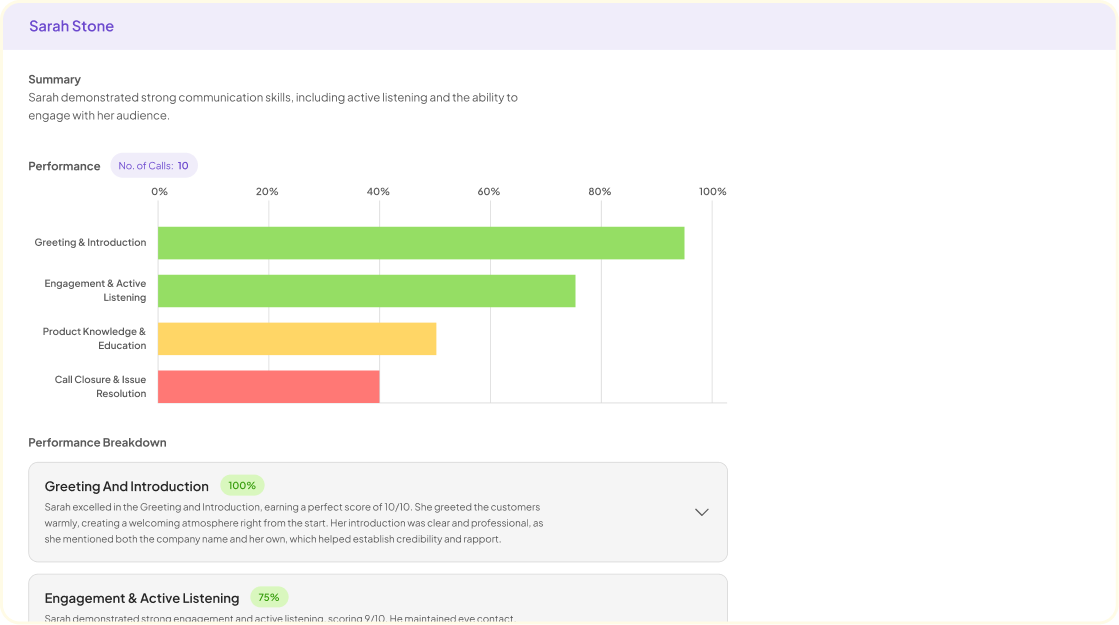Emotion Detection Insight is transforming how we understand sentiment analysis. As businesses gather substantial customer feedback, interpreting these emotions can prove challenging yet essential. Traditional analysis often lacks the capacity to unearth the nuanced feelings behind text, which is vital for making informed decisions. This section will delve into the intricacies of detecting emotions and how this insight can provide deeper understanding of customer sentiments.
By employing advanced techniques, companies can move beyond basic sentiment metrics, unveiling the complex emotions that drive consumer behaviors. Recognizing joy, anger, or sadness within customer conversations allows organizations to tailor their strategies effectively. As we explore this topic, the importance of emotion detection in sentiment analysis becomes clear—it is not merely about knowing if feedback is positive or negative, but understanding the underlying emotions that can shape customer engagement and loyalty.
Understanding Sentiment Analysis
Sentiment analysis is a powerful technique used to assess emotional tone in text. By examining the words and phrases that people use, this method provides insights into their feelings, opinions, and attitudes. Emotion detection insight plays a crucial role in understanding consumer behavior, enabling businesses to align their strategies with customer sentiments effectively.
The process of sentiment analysis involves collecting textual data and applying algorithms to analyze the emotions expressed. Typically, this includes classifying text into categories such as positive, negative, or neutral. Advanced models can even detect specific emotions like joy, anger, or sadness. Businesses can use this information to improve products and services, enhancing customer satisfaction. Embracing sentiment analysis allows organizations to make informed decisions based on genuine consumer emotions, driving success in highly competitive markets. Understanding these nuances can transform how companies interact with their customers and tailor their approaches accordingly.
Sentiment Analysis and Its Applications
Sentiment analysis plays a crucial role in understanding customer emotions and opinions. This process enables businesses to extract valuable insights by analyzing text data from various sources such as social media, reviews, and surveys. When applied effectively, sentiment analysis can reveal how customers feel about products or services, which helps businesses tailor their strategies accordingly.
Emotion detection insight further enhances the effectiveness of sentiment analysis. By categorizing emotions such as happiness, anger, or sadness within customer interactions, organizations can respond more appropriately to feedback. This insight allows them to refine marketing strategies, improve customer service, and identify potential areas for product development. Ultimately, understanding emotions behind customer feedback fosters better engagement and drives business success.
Techniques Used in Sentiment Analysis
Sentiment analysis employs various techniques to derive emotion detection insights from textual data. One foundational method is the use of natural language processing (NLP), which helps analyze and interpret the nuances in language. This technique includes tokenization, where text is broken down into smaller units called tokens, allowing for easier analysis of sentiment.
Another vital technique involves machine learning algorithms. These algorithms can classify emotions conveyed in sentences through training on labeled datasets. For instance, supervised learning can help identify positive, negative, or neutral sentiments based on historical data. Additionally, sentiment lexicons—dictionaries of words associated with specific emotions—are often employed to enrich analysis. By integrating these methods, sentiment analysis becomes a powerful tool for extracting actionable emotional insights from customer feedback or social media data.
Emotion Detection Insight: Beyond Basic Sentiments
Emotion Detection Insight extends beyond merely categorizing sentiments into positive, negative, or neutral. It delves deeper into understanding the complexities of human emotions as expressed in text. By examining nuanced emotional responses, businesses can unlock valuable insights that inform strategies and enhance customer engagement. This depth of analysis allows companies to comprehend not only what customers feel but also why they feel that way, paving the path for more personalized interactions.
To achieve effective Emotion Detection Insight, consider the following aspects:
Granularity: Understand that emotions exist on a spectrum; identifying specific feelings helps in forming a richer narrative about customer sentiments.
Contextual Awareness: The context in which emotions are expressed plays a crucial role. Emotions can vary drastically depending on cultural or situational factors.
Temporal Dynamics: Emotions are not static. Tracking emotional shifts over time can reveal evolving customer sentiments, guiding timely responses and actions.
Through addressing these considerations, organizations can elevate their approach to emotion detection and foster deeper connections with their audience.
Emotion Detection Insight: How Emotions Are Identified
Emotion Detection Insight reveals how emotions are identified through various methodologies. The process begins with data collection from sources like social media, customer reviews, and surveys. Natural Language Processing (NLP) algorithms analyze this textual data, identifying sentiment-laden words and phrases. For example, words like "happy" or "disappointed" can serve as emotional indicators.
Following the initial analysis, machine learning models can classify emotions into categories such as joy, anger, or sadness. These models are trained on large datasets to refine their predictive capabilities. Furthermore, to enhance accuracy, sentiment analysis tools often incorporate context and tone, capturing the nuances in language. By understanding how emotions are expressed in different contexts, businesses can gain deep insights into customer sentiment, leading to more impactful decisions and strategies. The intricate combination of technology and language analysis makes Emotion Detection Insight a vital component in modern sentiment analysis.
Tools and Technologies for Emotion Detection Insight
Emotion Detection Insight hinges on utilizing various tools and technologies designed to accurately interpret human sentiments. Advanced algorithms and machine learning models play a crucial role in processing language, tone, and context in written or vocal communication. These technologies can analyze massive datasets efficiently, extracting emotions by recognizing patterns that traditional methods might overlook.
The following tools significantly contribute to enhancing Emotion Detection Insight:
Natural Language Processing (NLP): NLP tools interpret and analyze human language, helping identify emotional expressions in text.
Sentiment Analysis Software: These specialized programs assess sentiment intensity, categorizing emotions as positive, negative, or neutral.
Voice Analysis Technology: This technology examines tone and pitch, providing insights into the speaker’s emotional state during conversations.
Facial Recognition Tools: These systems detect and analyze facial expressions, revealing underlying emotions during interactions.
By integrating these technologies, organizations can gain deeper emotional insights, enabling them to tailor their communications and strategies effectively. Understanding and applying these tools can significantly enhance the accuracy and reliability of emotion detection.
Challenges and Future Directions in Emotion Detection Insight
Emotion Detection Insight faces several challenges that hinder its effectiveness in understanding human emotions. One significant obstacle is the complexity of emotional expressions, which can vary greatly across cultures and contexts. Misinterpretations can easily arise, especially since emotions are often conveyed non-verbally. Another challenge lies in the rapid evolution of language, especially with informal communication on social media platforms. Slang, emojis, and abbreviations can complicate sentiment analysis and may lead to errant conclusions if not thoroughly addressed.
Looking ahead, improving the accuracy of Emotion Detection Insight is essential. This could be achieved through enhanced training data that includes a more diverse range of emotional expressions. Additionally, the integration of advanced machine learning models will enable better contextual understanding. Combining multiple modalities—such as text, audio, and visual cues—can enrich emotional analysis, providing deeper insights into human feelings. Addressing these challenges while exploring these future directions holds promise for more precise and meaningful emotion detection in various applications.
Conclusion: Emotion Detection Insight in the Sentiment Analysis Landscape
Emotion Detection Insight holds significant importance in the realm of sentiment analysis. As organizations strive to capture customer feelings accurately, understanding emotional nuances enhances their ability to respond effectively. By dissecting various sentiments, businesses can tailor their strategies to address customer needs more comprehensively.
Moreover, the insights drawn from emotion detection inform marketing, product development, and customer service initiatives. Recognizing specific emotions allows teams to engage more meaningfully with their audience, fostering loyalty and improving user experiences. Ultimately, integrating Emotion Detection Insight into sentiment analysis amplifies the potential for informed decision-making and deeper connections with customers.


